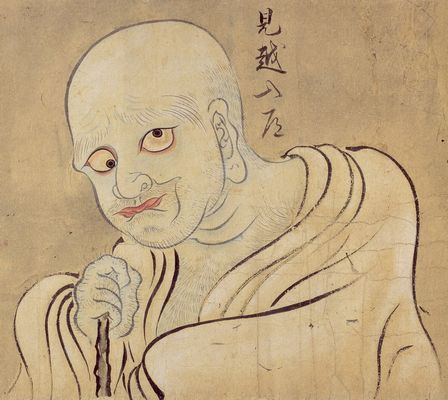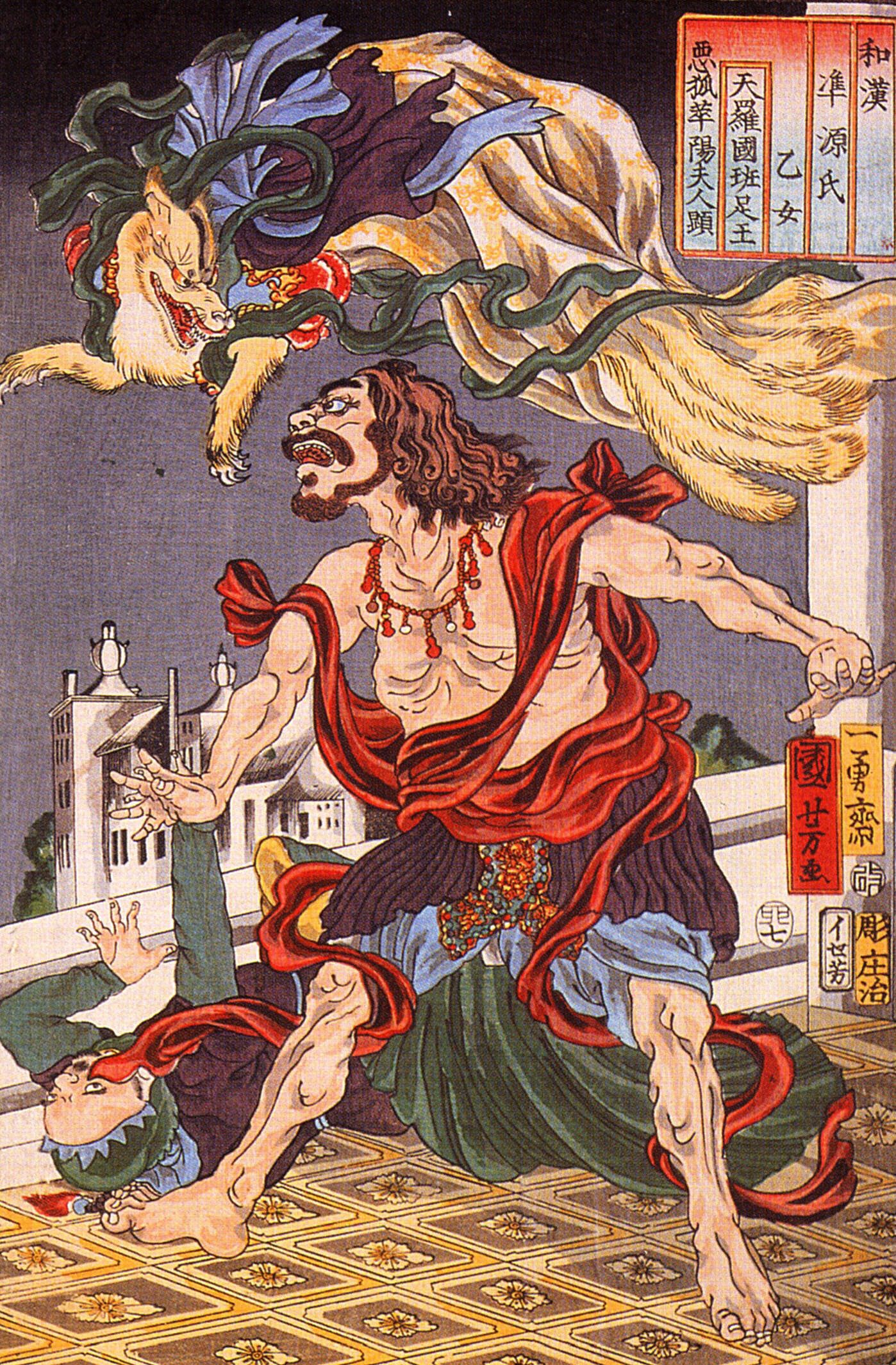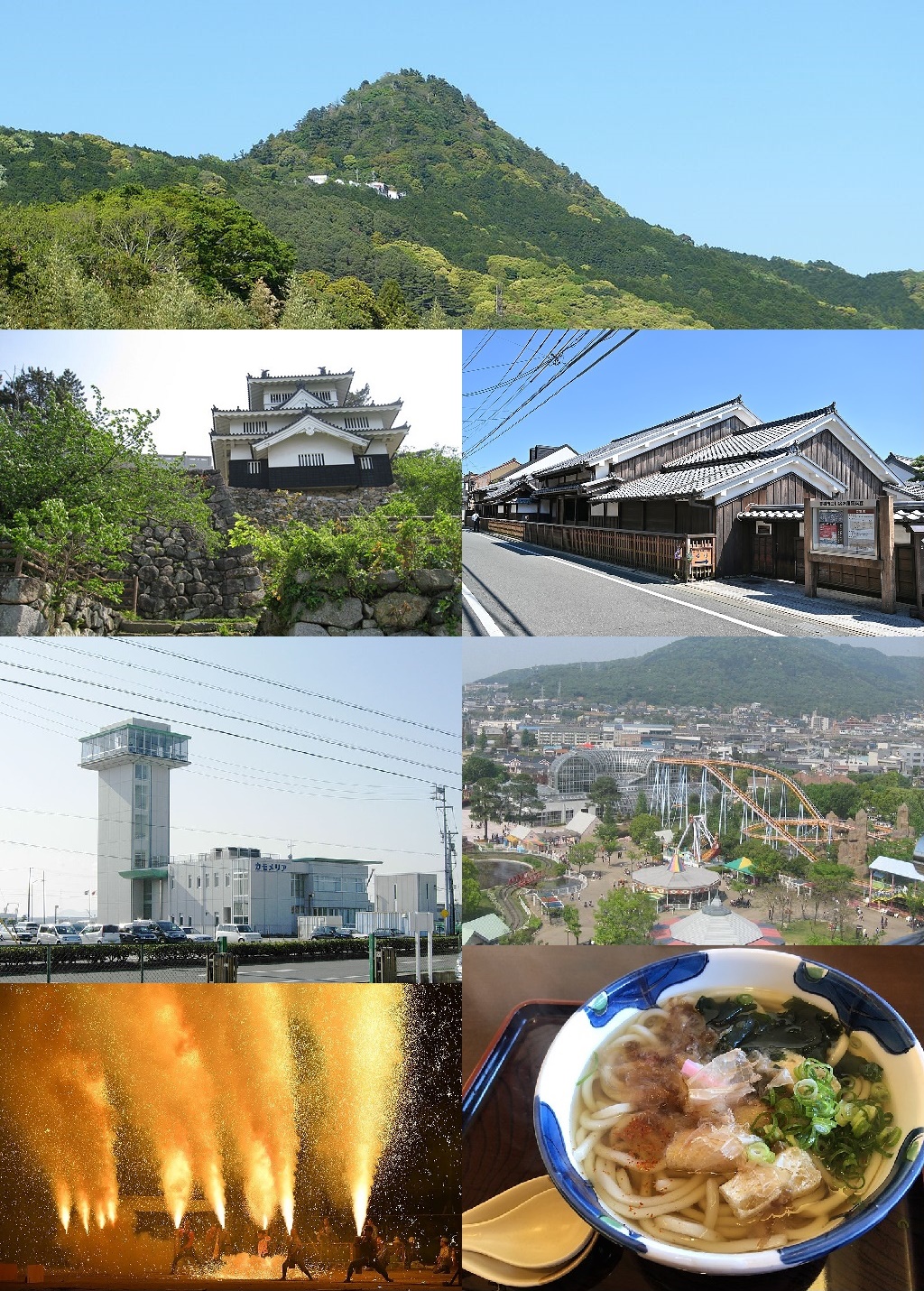|
Mikoshi-nyūdō
Mikoshi-nyūdō (見越し入道 or 見越入道) is a type of bald-headed ''yōkai'' "goblin" with an ever-extending neck. In Japanese folklore and Edo period (1603–1868) ''kaidan'' "ghost story" texts, ''mikoshi-nyūdō'' will frighten people who look over the top of things such as ''byōbu'' folding screens. The name combines ''mikoshi'' 見越し (lit. "see over") "looking over the top (of a fence); anticipation; expectation" and ''nyūdō'' 入道 (lit. "enter the Way") "a (Buddhist) priest; a bonze; a tonsured monster". Summary When walking to the end of a road at night or a hill road, something the shape of a monk would suddenly appear, and if one looks up, it becomes taller the further one looks up. They are so big that one would look up at them, and thus are given the name "." Sometimes, if one just looks at them like that, one might die, but they can be made to disappear by saying "." They most frequently appear when walking alone on night paths, but they are also s ... [...More Info...] [...Related Items...] OR: [Wikipedia] [Google] [Baidu] |
Okayama Prefecture
is a Prefectures of Japan, prefecture of Japan located in the Chūgoku region of Honshu. Okayama Prefecture has a population of 1,906,464 (1 February 2018) and has a geographic area of 7,114 Square kilometre, km2 (2,746 sq mi). Okayama Prefecture borders Tottori Prefecture to the north, Hyōgo Prefecture to the east, and Hiroshima Prefecture to the west. Okayama is the capital and largest city of Okayama Prefecture, with other major cities including Kurashiki, Tsuyama, and Sōja. Okayama Prefecture's south is located on the Seto Inland Sea coast across from Kagawa Prefecture on the island of Shikoku, which are connected by the Great Seto Bridge, while the north is characterized by the Chūgoku Mountains. History Prior to the Meiji Restoration of 1868, the area of present-day Okayama Prefecture was divided between Bitchū Province, Bitchū, Bizen Province, Bizen and Mimasaka Province, Mimasaka Provinces. Okayama Prefecture was formed and named in 1871 as part of the large-scal ... [...More Info...] [...Related Items...] OR: [Wikipedia] [Google] [Baidu] |
Kitsune
In Japanese folklore, , are foxes that possess paranormal abilities that increase as they get older and wiser. According to ''yōkai'' folklore, all foxes have the ability to shapeshift into human form. While some folktales speak of employing this ability to trick others—as foxes in folklore often do—other stories portray them as faithful guardians, friends, and lovers. Foxes and humans lived close together in ancient Japan; this companionship gave rise to legends about the creatures. have become closely associated with Inari, a Shinto or spirit, and serve as its messengers. This role has reinforced the fox's supernatural significance. The more tails a has—they may have as many as nine—the older, wiser, and more powerful it is. Because of their potential power and influence, some people make sacrifices to them as to a deity. Conversely foxes were often seen as " witch animals", especially during the Edo period (1603–1867), and were thought of as goblins who could ... [...More Info...] [...Related Items...] OR: [Wikipedia] [Google] [Baidu] |
Tengu
are a type of legendary creature found in Japanese folk religion (Shinto). They are considered a type of ''yōkai'' (supernatural beings) or Shinto ''kami'' (gods). The ''Tengu'' were originally thought to take the forms of birds of prey and a monkey deity, and they are traditionally depicted with human, monkey, and avian characteristics. Sarutahiko Ōkami is considered to be the original model of Konoha-Tengu (a supernatural creature with a red face and long nose), which today is widely considered the ''Tengu''s defining characteristic in the popular imagination. He is the Shinto monkey deity who is said to shed light on heaven and earth. Some experts theorize that Sarutahiko was a sun god worshiped in the Ise region prior to the popularization of Amaterasu. Buddhism long held that the ''Tengu'' were disruptive demons and harbingers of war. Their image gradually softened, however, into one of protective and even manifestations of Buddhist deities, if still dangerous, spirits ... [...More Info...] [...Related Items...] OR: [Wikipedia] [Google] [Baidu] |
Nio (Buddhism)
are two wrathful and muscular guardians of the Gautama Buddha, Buddha standing today at the entrance of many Buddhist temples in East Asian Buddhism in the form of frightening wrestler-like statues. They are dharmapala manifestations of the bodhisattva Vajrapāṇi, the oldest and most powerful of the Mahayana Buddhist pantheon (gods), pantheon. According to scriptures like the Pāli Canon as well as the ''Ambaṭṭha Sutta'', they travelled with Gautama Buddha to protect him. Within the ahimsa, generally pacifist tradition of Buddhism, stories of dharmapalas justified the use of physical force to protect cherished values and beliefs against evil. They are also seen as a manifestation of Mahasthamaprapta, the bodhisattva of power that flanks Amitābha in Pure Land Buddhism and as Vajrasattva in Tibetan Buddhism. Manifestations Symbolic meaning They are usually portrayed as a pair of figures that stand guarding temple entrance gates usually called ''Shanmen, Shānmén'' (山 ... [...More Info...] [...Related Items...] OR: [Wikipedia] [Google] [Baidu] |
ōnyūdō
Ōnyūdō is a yōkai, or supernatural monster, told about in parts of Japan. Summary Their name has the meaning of "big monk," but depending on area, there are various legends where their actual appearance is that of an unclear shadow, simply a giant rather than a monk, among others.村上2005年、60-61頁。 The ones that look like a monk (bōzu) are also called ōbōzu. In size, there are those that are about two meters tall, slightly larger than that of a human, to giants that about the size of a mountain.水木2004年、29頁。 There are many legends where ōnyūdō menace people and many legends where those who see one become ill. There are also stories where they are foxes ( kitsune) or tanuki in disguise, or something that a stone pagoda shapeshifts into, but many of them are of unknown true identity. Legends by area Ōnyūdō that inflict harm to people ;Example from Hokkaido :In the years of Kaei, an ōnyūdō appeared in an Ainu village near Lake Shikotsu ridg ... [...More Info...] [...Related Items...] OR: [Wikipedia] [Google] [Baidu] |
Nagoya
is the largest city in the Chūbu region, the fourth-most populous city and third most populous urban area in Japan, with a population of 2.3million in 2020. Located on the Pacific coast in central Honshu, it is the capital and the most populous city of Aichi Prefecture, and is one of Japan's major ports along with those of Tokyo, Osaka, Kobe, Yokohama, and Chiba. It is the principal city of the Chūkyō metropolitan area, which is the third-most populous metropolitan area in Japan with a population of 10.11million in 2020. In 1610, the warlord Tokugawa Ieyasu, a retainer of Oda Nobunaga, moved the capital of Owari Province from Kiyosu to Nagoya. This period saw the renovation of Nagoya Castle. The arrival of the 20th century brought a convergence of economic factors that fueled rapid growth in Nagoya, during the Meiji Restoration, and became a major industrial hub for Japan. The traditional manufactures of timepieces, bicycles, and sewing machines were followed by th ... [...More Info...] [...Related Items...] OR: [Wikipedia] [Google] [Baidu] |
Denma (town)
''Denma'' () is a South Korean webtoon written and illustrated by and colored by Hong Seung-hee. Started on 8 January 2010, this manhwa was released on Naver WEBTOON, where it continues to be published. It has been translated into Japanese, English and Simplified and Traditional Chinese. The new English version is updated Wednesday, Thursday, Friday, Saturday and Sunday. Overview The author takes many names from the Bible. In the interview, the author said he was reading the Bible at that time and got many names, so he used them randomly in Denma. The world view of Denma is the same as the author's previous works ''Iron Dog John Doe'' (1998) and '' Rami Record'' (2008). According to the interview, 《Iron Dog John Doe》 was serialized in the manuscript "Young Red", "Comic King" published in Mr. Blue. It's a SF with a theme of violence. The title meaning that the 'dog made of iron has no trace'. The first idea was a school violence, but in 1997 of South Korea, this a time ... [...More Info...] [...Related Items...] OR: [Wikipedia] [Google] [Baidu] |
Aichi Prefecture
is a prefecture of Japan located in the Chūbu region of Honshū. Aichi Prefecture has a population of 7,552,873 () and a geographic area of with a population density of . Aichi Prefecture borders Mie Prefecture to the west, Gifu Prefecture and Nagano Prefecture to the north, and Shizuoka Prefecture to the east. Overview Nagoya is the capital and largest city of Aichi Prefecture, and the fourth-largest city in Japan, with other major cities including Toyota, Okazaki, and Ichinomiya. Aichi Prefecture and Nagoya form the core of the Chūkyō metropolitan area, the third-largest metropolitan area in Japan and one of the largest metropolitan areas in the world. Aichi Prefecture is located on Japan's Pacific Ocean coast and forms part of the Tōkai region, a subregion of the Chūbu region and Kansai region. Aichi Prefecture is home to the Toyota Motor Corporation. Aichi Prefecture had many locations with the Higashiyama Zoo and Botanical Gardens, The Chubu Centrair Internat ... [...More Info...] [...Related Items...] OR: [Wikipedia] [Google] [Baidu] |
Toyohashi, Aichi
is a city in Aichi Prefecture, Japan. , the city had an estimated population of 377,453 in 160,516 households and a population density of 1,400 persons per km2. The total area of the city was . By area, Toyohashi was Aichi Prefecture's second-largest city until March 31, 2005 when it was surpassed by the city of Toyota, which had merged with six peripheral municipalities. Geography Toyohashi is located in southeastern Aichi Prefecture, and is the capital of the informal "Higashi-Mikawa Region" of the prefecture. It is bordered by Shizuoka Prefecture to the east, and by Mikawa Bay and the headlands of the Atsumi Peninsula to the west. To the south is the Enshu Bay of the Pacific Ocean. The presence of the warm Kuroshio Current offshore gives the city a temperate climate. The in Toyohashi is a sea turtle nesting spot. Climate The city has a climate characterized by hot and humid summers, and relatively mild winters (Köppen climate classification ''Cfa''). The average annual tempe ... [...More Info...] [...Related Items...] OR: [Wikipedia] [Google] [Baidu] |
Mikawa Province
was an old province in the area that today forms the eastern half of Aichi Prefecture. Nussbaum, Louis-Frédéric. (2005). "''Mikawa''" in . Its abbreviated form name was . Mikawa bordered on Owari, Mino, Shinano, and Tōtōmi Provinces. Mikawa is classified as one of the provinces of the Tōkaidō. Under the ''Engishiki'' classification system, Mikawa was ranked as a "superior country" (上国) and a "near country" (近国) in terms of its distance from the capital. History Mikawa is mentioned in records of the Taika Reform dated 645, as well as various Nara period chronicles, including the Kujiki, although the area has been settled since at least the Japanese Paleolithic period, as evidenced by numerous remains found by archaeologists. Early records mention a "Nishi-Mikawa no kuni" and a "Higashi-Mikawa no kuni", also known as . Although considered one administrative unit under the ''Engishiki'' classification system, this division (roughly based at the Yasaku River) pers ... [...More Info...] [...Related Items...] OR: [Wikipedia] [Google] [Baidu] |
Shōtoku (era)
was a after ''Hōei'' and before ''Kyōhō.'' This period spanned the years from April 1711 through June 1716.Nussbaum, Louis-Frédéric. (2005). "''Shōtoku''" ; n.b., Louis-Frédéric is pseudonym of Louis-Frédéric Nussbaum, ''see'Deutsche Nationalbibliothek Authority File. The reigning emperor was .Titsingh, Isaac. (1834 ''Annales des empereurs du japon'', pp. 416-417./ref> Change of Era * 1711 : The era name of ''Shōtoku'' (meaning "Righteous Virtue") was created to mark the enthronement of Emperor Nakamikado. The previous era ended and the new one commenced in ''Hōei'' 8, on the 25th day of the 4th month. Events of the ''Shōtoku'' Era * 1711 (''Shōtoku 1''): An ambassador from Korea arrived at the court.Titsingh p. 416./ref> * November 12, 1712 (''Shōtoku 2, 14th day of the 10th month''): Shōgun Tokugawa Ienobu died. * 1713 (''Shōtoku 3''): Minamoto no Ietsugu became the 7th shōgun of the Edo bakufu. * 1714 (''Shōtoku 4''): The shogunate introduces new gold an ... [...More Info...] [...Related Items...] OR: [Wikipedia] [Google] [Baidu] |






